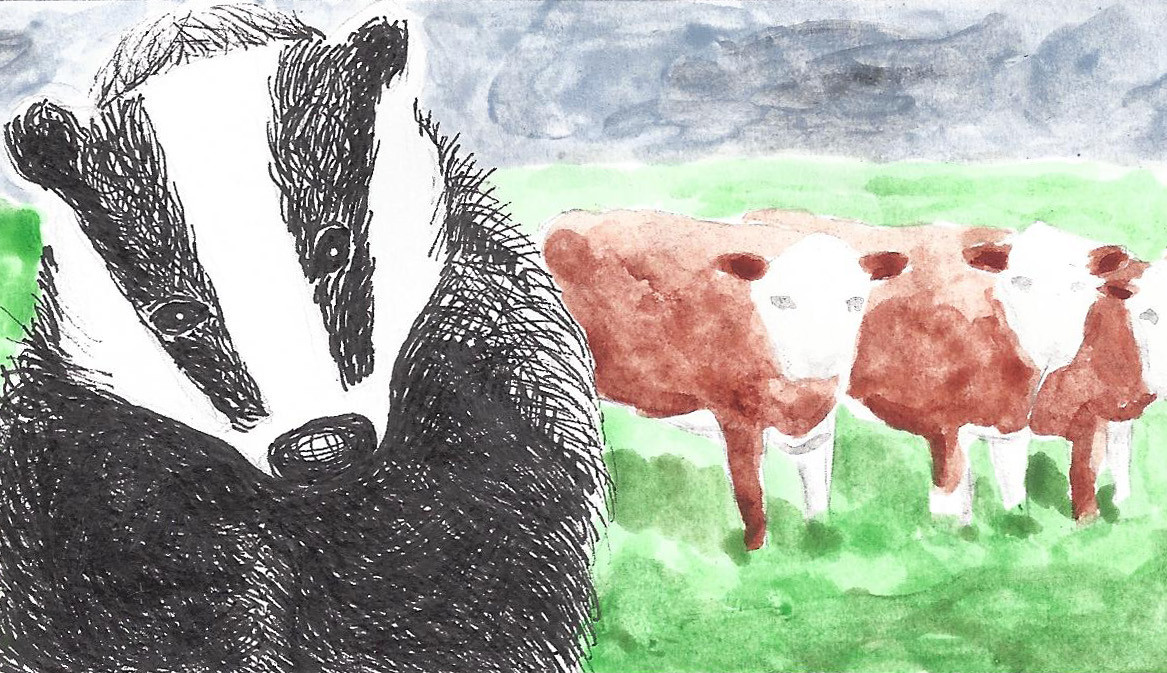By Adam Savat
They may have a stiff upper lip, but the British are having a tough time coping with cattle panic. Almost all major cattle raising countries are plagued by livestock issues, such as excessive weight gain in the United States or the contention over deforestation for more grazing lands in Brazil. However, the United Kingdom’s cows have led the country through especially difficult crises, crowning in the most recent battle with a seemingly unrelated animal: the badger.
Britain’s woes began in 1986 with the outbreak of bovine spongiform encephalopathy, commonly referred to as “mad cow disease,” due to the wild behavior of infected cattle. These cows were fed a mixture of meat and bones that came from sheep with a similar disease, unknowingly infecting a large portion of the cow population. As a result of the widespread use of this cheap fodder, “mad cow disease” grew at a phenomenal rate, culminating in some 1,000 new cases per week in 1993. The negligent feeding practices that infected the cattle were eventually stopped, but not before the sickness had spread to the public in the form of Creutzfeldt-Jakob disease, a fatal neurodegenerative condition that caused nearly 175 deaths in Britain between 1996 and 2011.
Because of the impact of diseased cattle on human health, the UK has been increasingly careful and vigilant with its cattle herds. Today, the most dangerous threat to Britain’s cow industry is the spread of bovine tuberculosis. Government-collected data indicates that cases of TB in cow herds have increased since 1996, to the point where 5,935 herds reported TB infection while only 3,743 remained clean.
The leading cause of this epidemic is the badger population, primarily in Gloucestershire and Somerset counties, in the west of England. These badgers are known to carry TB and many experts believe that a short, sharp reduction, or “cull,” of the badger population would greatly benefit the cattle that are bitten and infected by them — as are the British citizens who consume cattle. A six-week window was opened in late August for the hunting of badgers, with the hope of reducing the badger population by 70 percent. But as of early November, about 65 percent of the badgers in Somerset and only 30 percent in Gloucestershire have been removed, even after a widely debated extension of the newly-minted badger hunting season.
The cull’s main proponents have cited precedent, like the 100 million pound (161 million dollars) initiative in 2012 to slaughter 28,000 TB-infected cattle. Arguing for a rapid, massive cull, they point to evidence that a prolonged cull can actually increase rates of bovine TB, due to the increased movement of surviving badger populations as their competitors die off.
The opposition has attacked the cull from both a financial and an animal rights stance, claiming that the mass killing of badgers is unnecessarily harmful and ecologically disruptive — and could potentially cause even more bovine tuberculosis. While the government acknowledges the danger inherent in prolonged culls, it nevertheless extended the hunting season by an additional three-week period — still, it failed to net even half the recommended number of badgers. A spokesman for The Wildlife Trusts pointed to the underwhelming cull rates as evidence of a failed policy. “Culling badgers over such a prolonged period and failing to meet the required targets is likely to have worsened the Bovine TB situation at a cost of millions of pounds,” the spokesman said — that is, having tried and failed is actually worse than having never tried at all.
The real issue, however, is uncertainty. British citizens understand the utter harm that bovine tuberculosis can wreak on both cattle and human populations — few disagree that it must be curbed in some fashion. But the effects of a cull of such magnitude are unknown. Regardless of the intended goal, widespread badger hunting could have a negative impact on the environment. It’s equally possible that the extension of this cull would simply increase the TB present among cattle next year as smaller badger populations become more mobile. This would arrest progress even further. According to the government, the benefits of an ideal cull would glean no more than a 16 percent reduction in TB. The risks, therefore, are substantial, especially when considering the meager rewards.
Luckily there are other options, such as badger vaccination. In Wales, the government has begun vaccinating badgers in the hopes of finding a non-lethal way around TB. The approach is incredibly costly, with an annual price tag averaging around 620 pounds (1,000 U.S. dollars) per badger. The ideal situation for all populations, then, would be a combination of the two: a cull to deal with the most heavily infested areas and a vaccination to focus on prevention elsewhere. The best strategy will only become clear after gathering extensive data on bovine TB. Hopefully it will point the way to a definitive path forward for Britain and its beleaguered badgers.
Art by Olivia Watson

Lol, that would be me.
-Neil. man I need to work on this.
not guilty hahah
okay better question: who can’t tell when they’re posting as BPR vs. posting as themselves??
hahaha guys who is responsible for this… Matthew Neil Ben?
All the puns for Adam
Adam Savat
Alex Lloyd George